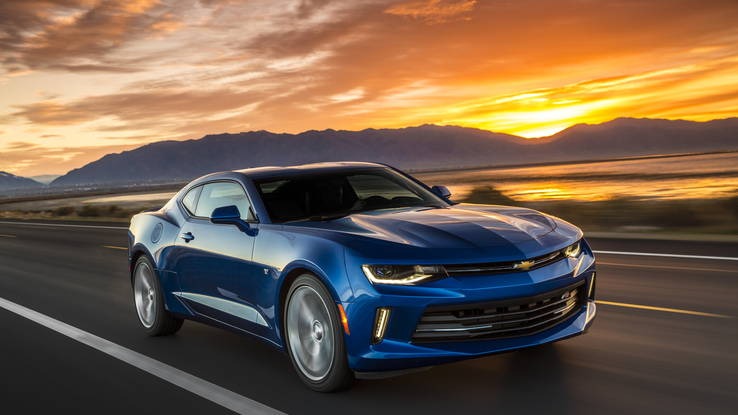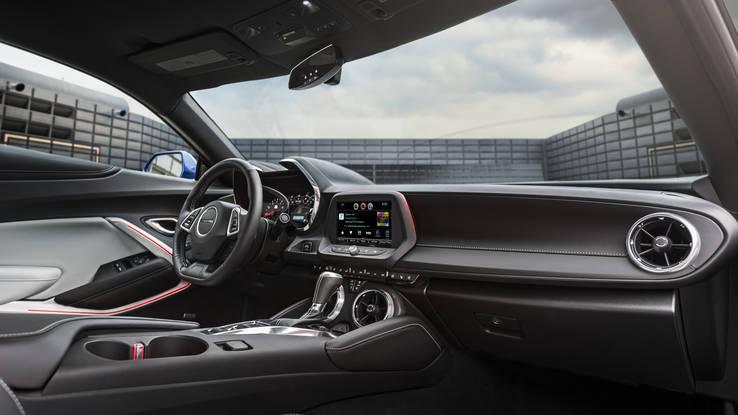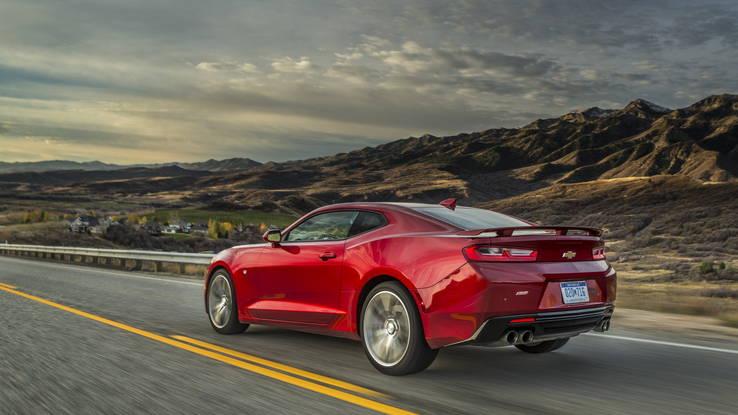Chevy demolishes Iron Duke memories with boosted 2.0-liter
The idea of a four-cylinder Chevrolet Camaro brings back memories of the anemic LQ8 and LQ9 I4, also called the Iron Duke. The good news is, unlike that third-generation Camaro that the Iron Duke called home, underpowered Camaros are a thing of the past. This new 2.0-liter turbocharged I4 is no slouch, turning out 275 hp and 295 lb-ft of torque. Those figures should seem familiar, considering the Cadillac ATS offers the exact same mill.
According to the folks at General Motors, the four-banger will be available with whatever Camaro options you want, save for special packages like the ZL1 and other track packages. For folks that want a fun-to-drive budget convertible or a nice, loaded sports car without the fire-breathing, gas-guzzling 6.2-liter V8 underhood, here it is.

The 2016 Camaro 2.0-liter turbocharged I4 is on sale now.
What’s it like to drive?
Wheeling around Spring Mountain Raceway in Nevada, this Camaro is not only a load of fun, but also demonstrates a massive performance leap over the previous generation’s base coupe. The weight savings already made it more agile in the V6 and V8 trims, and the turbocharged I4 makes it even less nose heavy. Power is down from the 2015 base model, but since weight is down, too, that difference essentially nil.
Entering and exiting the corners, the car’s steering feels both direct and responsive. The tail never threatens to swing wide, but neither does the nose plow hard when entering a turn too hot. The factory brakes do a decent job at slowing the Camaro down, but they begin to betray their stock nature after several hard laps. If there are any serious track junkies interested in a four-cylinder Camaro, they would do well to invest in better pads and fluid (we assume they do regardless).

The 2016 Camaro 2.0-liter turbocharged I4 is on sale now.
For folks not interested in how this Camaro acts during track days, a jog through Death Valley, California, does well enough to showcase its road manners. Opening it up down the long stretches of desert road reveals the four-cylinder’s shortfall. It isn’t slow, but when piloted back to back with the V6- and V8-powered convertibles in the pack, the little I4 clearly loses, and by an ample margin. And if triple digits somehow pop up on the speedo, the front end will start to exhibit a hint of lift: a downside of all that lightness in the nose.
The I4 also lacks the aural richness that the V8 and, to a lesser degree, the V6 bring to the table. Next to the SS Camaro’s throaty, crackling roar and the V6’s European-ish rasp, the I4’s note is oddly nondescript but for a bit of turbo whine.

The 2016 Camaro 2.0-liter turbocharged I4 is on sale now.
And that’s just fine for daily use. Coupled with the generous sound-deadening material in the cabin, podcasts, talk radio or even some soothing smooth jazz can be enjoyed without too much interference from the outside world. Even off pavement and along a winding desert dirt road, the noise from the all the dirt slinging is deadened well, at least for a sports car.
The weakest feature of this latest generation Camaro (and the one before, and the one before that), is outward visibility. Keeping an eye on the mirrors when changing lanes or doing any sort of city driving is crucial. The tiny back window gets even worse if you check the box for the folding top; of course, actually using said top affords the opportunity to see the world around you unimpeded.

The 2016 Camaro 2.0-liter turbocharged I4 is on sale now.
Do I want it?
The stigma of the Iron Duke might be a hard one to shake for older enthusiasts, but for those without the same hangups and on a budget, the 2.0-liter turbocharged Camaro is a solid bet — especially when you throw in highway mileage near 30 mpg (still waiting on actual figures from Chevy). It also does not embarrass itself on a racetrack. Still, we would argue that the I4’s biggest competitor is the V6 Camaro. If you can afford the $ 1,495 premium, you’ll thank yourself. As good as the I4 feels to drive, the V6 is priced so closely that it’s hard to ignore.
For someone who wants to check a bunch of option boxes and create a fairly bespoke experience at a sane price, the Camaro offers that. The question most are asking, however, is: “Will it beat a base Mustang?” The best answer we can give at this point is a solid “maybe.”





























